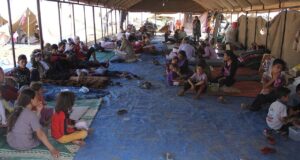Thus, to question the R2P norm on the basis that it does not safeguard states from the arbitrary intervention of other states would be to not only neglect the circumstances in which R2P even deems intervention possible, but also to suppose that all intervening parties citing R2P to justify their interventions actually led interventions warranted by the R2P norm rather than entailing its breach. Yet, the reality is that the legality of some interventions, such as the Russian intervention in Crimea, would be disputed even under the R2P norm.
In Ukraine, while the ‘Euromaidan’ protests and violent clashes that ensued between protesters and special police forces led to the pro-Russian Yanukovych fleeing the capital and later the country, there were no mass atrocity crimes committed or likely to be committed against the Russian-speaking peoples or ethnic Russians in southern or eastern Ukraine. Hence, though the Russian Foreign Ministry appealed to R2P logic to justify Russia’s occupation of Crimea[4] and planned expansion of military actions to eastern Ukraine[5], this hardly reflected on the R2P norm itself, under which the legitimacy of the Russian position could also be disputed.
Moreover, just because Russia unilaterally decided to intervene in Crimea without Western support, the case is not rendered comparable with cases of Western intervention that Russia may not have endorsed, such as the NATO intervention in Kosovo. Likewise, drawing parallels between Crimea and Libya, as has become commonplace, would again entail ignoring the conditions that accompany the R2P norm that makes military intervention possible in certain circumstances. Whilst it must be conceded that the R2P norm, as it stands, is not immune to abuse, Russia’s actions in Crimea could not be justified even under R2P.
At the time of NATO’s intervention in Libya in 2011, the North African country had also seen a wave of popular protests against a repressive regime and violent clashes between protesters and security forces. However, its similarities with Ukraine end there. While Russia intervened in Crimea after the pro-Russian Yanukovych fled, NATO intervened in Libya while Gaddafi was still in power and unashamedly exhorting state forces and supporters to crush dissent. The autocratic ruler described rebels as “germs”, “rats”, “scumbags” and “cockroaches”[6] and vowed to “cleanse Libya house by house”.[7] Moreover, by then, hundreds had already been killed.
A fair parallel would be if the West chose to intervene in Libya after Gaddafi had been ousted to bring the country under Western occupation or bring Gaddafi back to power, on grounds that Libya’s minorities or liberal, secular factions would be safer thus than under Islamist groups that could take charge. A fair parallel would also be if the West supported plans for pro-Western factions in Libya to hold a referendum on secession while it militarily occupied Libya. However, neither of these two hypothetical scenarios apply to the 2011-intervention in Libya. If anything, Western intervention in Libya was the opposite of the Russian intervention in Crimea.
A richer parallel would be that drawn with NATO’s intervention in Kosovo in the late-1990s, as by Gerard Schroeder who noted that neither did NATO then nor does Russia now have a UN Security Council mandate for intervention.[8] This parallel is also significant as Russia itself has employed Kosovo’s US-backed secession in 2008 as a shield while supporting the Crimean right to secede.[9] Milena Tsmilyanich noted in The Voice of Russia that Crimea and Kosovo had much in common, except for different patrons.[10] But again, the case of Kosovo would hardly provide for a fair comparison with Crimea and has been rightly dismissed by Angela Merkel.[11]
Verica Spasovka of Deutsche Welle has pointed out four reasons why “Crimea is not Kosovo”.[12] When NATO intervened in Kosovo in 1999, Yugoslav forces had already expelled hordes of Kosovo’s Albanians, whereas Russians in Crimea today were neither persecuted nor expelled on ethnic grounds. Secondly, the Srebinca massacre of Bosniaks in 1995 served as a recent historical precedent that made the threat to Kosovo’s Albanians more real. Thirdly, in Kosovo, military intervention was indeed the last resort, after all diplomatic efforts had failed. Fourthly, at no point was NATO ever interfering to make Kosovo join an adjacent state.
Furthermore, as Dan Bilefsky noted in The New York Times, “Kosovo was under United Nations administration when it declared independence in February 2008 in the aftermath of a brutal ethnic war with Serbia; Crimeans are being asked to vote on independence amid a Russian-backed military intervention.”[13]
Let us not forget that R2P is not a military protocol but one that works first and foremost with diplomatic instruments. For intervention to be warranted, citizens of a sovereign country must be subject to severe bodily and mental harm on a large-scale or be in danger of annihilation. There is absolutely no truthful or honest way in which the case could be made that this is the plight of Crimea’s ethnic Russians at present.
 Human Security Centre Human Rights and International Security Research
Human Security Centre Human Rights and International Security Research



